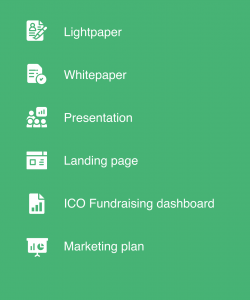Содержание
- The Storming Stage
- Scenario: Youre Leading Your Team Through The Storming Stage
- Tips On How To Facilitate Proper Group Development
- Keep Your Teamwork Transparent And Dreamy
- From Forming To Performing: Leading Through The 4 Stages Of Team Development
- Signs And Questions To Look Out For In The Storming Stage
- Tell Us About Your Next Design Project
There can also be conflict about the goals and objectives of the project . For those group members who have previously worked together, formerly unresolved issues may even arise. Some conflict can be good as it can help work through issues, as well as determine whether or not the group will be able to work together. Ultimately, the group needs to gain clarity by working through its major issues, which allows them to move forward into the next stage. The leader’s role in team building during this stage is a significant one.

Understand your people’s needs and make team management your greatest strength. Remote teams A simple platform that tells you how remote teams really feel, and fosters action-oriented 1-on-1 conversations. As the leader, you want to encourage this communication and coordination among members of the group, and continue to refine group processes to boost your efficiency.
Daisy called a lot of shots in the Forming stage, so she emerges as the dominant team leader in this stage. She proposes a clear schedule and takes charge of contacting the local store to see what supplies they can get here, and what supplies they may need to go to the city for. She wants to go to the city to buy seeds because they cannot get the broccoli seed she wants in the local store. Well, truth be told, some teams may skip this step altogether, all in the hope that they’ll avoid unpleasant conflict and the clash of ideas. Sometimes, subgroups may form around particular opinions or authority figures — which are all clear signs that team cohesion has not happened yet. At this initial stage, a glimpse of a future project leader may emerge, as the person who possesses the largest knowledge about the project’s subject takes unofficial charge.
The Storming Stage
This is important considering that at least some of you may work together in the future once again. Build trust among team members, by advocating honesty, transparency, and accountability. Stagnation is always worse than conflict — instead the four stages of team development of maintaining a facade of politeness, it’s crucial that you identify your problems, analyze them, AND talk about them. Stella and Daniel believe the garden is too much work for two people only, so they all decide to sell it.
Your participation should be much more focused on how the team is tackling problems rather than solving the problems for them. You will still raise issues, ask questions, and challenge approaches, but more to validate the team’s conclusion than to drive it. Leadership belongs to everyone on the team, and the team owns its results. Older, well-established teams can also cycle back through the stages as their circumstances change.

The team, which will potentially remain the same in a smaller company or startup, can now move on to the next project. As the name implies, the Storming stage of team development involves some conflict. Group members may compete with each other for areas of responsibility and/or specific tasks.
Members feel a sense of satisfaction with their progress, and identify with the team and what it is doing. There is a “can do” attitude, and a willingness to adjust roles to take advantage of the relative strengths of teammates. With their personal place on the team more firmly established, members shift their focus to accomplishing the goals of the group. More open and frank communication is possible, which helps the group coordinate and execute to a higher level of performance. Each of the steps forming, storming, norming, and performing referred to are a specific and necessary stage in the formation of any cohesive group.
Scenario: Youre Leading Your Team Through The Storming Stage
To be an effective leader, you need to know what these stages are, and understand where your team is on the continuum. It’s important that you take the lead in developing agendas, gathering information and solving problems. Try to involve as many members as you can in conversations and decisions, but know that the ultimate responsibility lies with you. Be sure to validate great teamwork early and often, even if it’s even more often now that your team is on top of its game. Just because your team is grooving, you shouldn’t stop investing attention into team development. It’s always possible to revert back to an earlier stage when factors change, or a team member withdraws from the group effort for personal or interpersonal reasons.
- Here, it’s typical for teammates to feel excited, anxious, and curious about what lies ahead.
- Delegate tasks appropriately, and according to the skills, experience, and interests of individual team members.
- This can lead to conflict, disputes, and competition, depending on how their expectations, workflows, ideas, and opinions differ.
- Today we’ll talk about what the stages of team development are, and how you can adapt your leadership emphasis to get maximum performance from your teammates every step of the way.
- The team’s leader is more engaged in team building at this stage to make sure everyone understands the plan.
June is approaching, and the vegetable garden is almost fully-grown. They know exactly which team member to call to help with each type of problem that arises in the project. Team members have grown fully accustomed to each other’s https://globalcloudteam.com/ workflows. They respect and acknowledge each other’s skills, talents, and experience. Adam, Daisy, Mark, Daniel, and Stella are now mostly content with everyone’s opinions concerning the type of fertilizer and seeds they’ll use.
It’s a great opportunity to reflect on your accomplishments and think about what you learned. At first, people are led by their natural desire to be liked by others and accepted among their peers. After all, when you have to cooperate with someone for a longer period, it’s easier to do it if you get along well.
Clarify the expected stages of group development right from the start, to highlight that conflicts and problems throughout the project are normal, and not a sign of failure. The team is already accustomed to each other’s workflows, and most future disputes and conflicts generally become easier to overcome. The official team leader takes a back seat much more than in the previous stages, and the individual team members are given their chance to shine.
In the Performing stage, the team begins to work individually and together as needed to make progress on planned tasks. The leader’s role in this stage of team building should be less involved if the team has been given clear direction. In moving forward, the team members may realize responsibilities, processes, and/or structures need to be adjusted on the fly, especially in a startup. If the team is focused on their planned tasks, these changes should occur smoothly.
More often in the corporate world, cross-functional teams will be formed for a project and then disperse at the end of the project. It’s the time where your team learns about upcoming projects and structures. Here, it’s typical for teammates to feel excited, anxious, and curious about what lies ahead. This is the stage where the team begins to function as a cohesive unit, no longer focused on individual goals. This is the stage where team members begin to trust one another.
Tips On How To Facilitate Proper Group Development
Your role as a leader is different, but no less important through all four stages. When your team works in different time zones, it’s necessary to use the right systems that cater to the time difference. Finding the right processes will help ease difficulties in timing, communication, and organization. Team members have a clear understanding of where they can best serve the team’s needs, and everyone is highly motivated to get to the same goal. Group norms have been accepted, and people feel comfortable to exchange ideas and challenge the status quo without fear of misplaced judgment or rejection. During the Norming stage, the team gradually optimises how it works.

She can often be found testing and writing about apps meant to enhance the workflow of freelancers, remote workers, and regular employees. Appeared in G2 Crowd Learning Hub, The Good Men Project, and Pick the Brain, among other places. Track the time you spend on individual tasks, to build daily and weekly reports of the time you spend on the project. You can then further analyze your reports to see how much time you need to finish individual project tasks and whether there is room for improvement in that time.
A deadline is missed, a launch doesn’t go as planned, or maybe it’s just that the workloads are heavy and it’s been too long since the last long weekend. Some team members may no longer be enthusiastic about all of the goals set out at the forming stage. Since everyone is off on their own island, it’s up to the team leader to kick off the team direction and paint a picture of the work to be done. Opportunities and challenges are discussed, and goals are laid out. What everyone needs most is a clear understanding of their part in the journey.
If the team doesn’t have some form of the continuous improvement process, such improvements happen organically, but if it does — they progress faster. Furthermore, at this stage, the team members don’t know whether they will be able to work well together and if they will fit in. They behave nicely, comply with instructions, and treat each other like strangers. As you learn about their progress, you ask them questions about their processes and notice how they collaboratively provide constructive answers. This way, they’ll remain high-performing while re-establishing trusted connections.
Keep Your Teamwork Transparent And Dreamy
They’re all really excited about the prospect of having access to fresh vegetables every day — they understand the benefits such a project would have for their family’s everyday meals. After a week of acquaintanceship, they realize they all have substantial experience in gardening. The position of this unofficial leader may also be occupied by the strongest authority figure in the team. Try the tool that helps teams around the world stay connected, productive, and inspired.
From Forming To Performing: Leading Through The 4 Stages Of Team Development
Randy KeirnSmoothly performing medical teams reduce the potential for miscommunication which may result in medical errors. Team development is affected by turnover, which brings the group back to the first stage, that of forming. Progression of a team through the stages is not always neat and clean. As a result, expect that there will be many questions as each person seeks to understand his or her role and how they are to participate.
After working through the significant issues, the group begins to coalesce and actually work as a team, supporting each other, and this is known as the Norming stage. During this phase of team building, responsibilities are clearly defined and the team begins to map out a plan to achieve its goals. The team’s leader is more engaged in team building at this stage to make sure everyone understands the plan.
This is where it’s important to level with individual contributors and truly get to know what’s going on. This is a great time to reflect on what makes a high-performing team able to accomplish tasks and move through obstacles. Your team needs to communicate clearly and, rely on one another rather than turn on each other. This is a crucial point in team development where leaders can pinpoint bottlenecks, areas of improvement and couple them with team strengths to build forward momentum. In the Performing Stage, the team is fully functional and achieving results.
Signs And Questions To Look Out For In The Storming Stage
At this stage, the team goals may already be clear, although its members may have different views on the best ways to achieve them. Managers should help the team consider everyone’s point of view and allow each member to contribute to relevant team discussions. Reaching consensus on each issue that requires a debate is crucial — compromises won’t help in the long term. Frequent and regular team retrospectives are great for discussing and resolving issues at this stage. Each stage of team development doesn’t necessarily take just as much time as the one that comes after it, nor the one before it.
Your contribution becomes more focused on your specialized knowledge and expertise than your ability to hold the team together. After all, their ability to overcome obstacles and achieve their goals is a reflection of a management job well done. Here’s the thing, the line between certain stages can get blurred since team members evolve at different times.
Stage 2: Storming Into Authentic Connections
You approach your team to learn about their bottlenecks, roadblocks and concerns. You come to realize that, by involving yourself, they’re burdened by an apprehension to speak up and would rather spend time rectifying the situation. While originally things had been going according to plan, roadblocks crop up during this stage. In the Norming Stage, team members begin to adjust their expectations to fit the current reality.
Tell Us About Your Next Design Project
Deborah Mackin is founder and president of New Directions Consulting, Inc. and author of teambuilding books, including the 2nd edition of the Team Building Tool Kit . As an international consultant and trainer for 20+ years, Deborah is a widely recognized authority on teams, quality service, productivity, and leadership. Ironically, every time a member is added to the team, the team reverts back to the Forming Stage and goes through the development stages again. Tuckman first outlined the Development Wheel in 1965; it continues to be an appropriate way to describe team development today.
